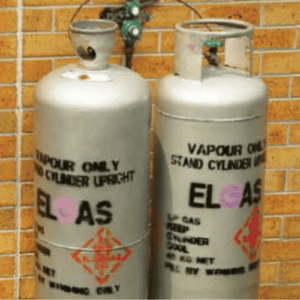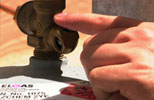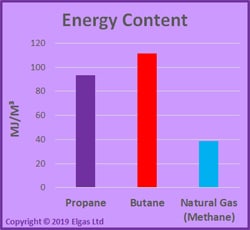LPG Compound: LPG Composition – Cooking Gas LPG – Household Gas
LPG compound is the LPG in gas bottles, which is propane, butane, isobutane and gas mixtures of the three gases. In some countries, like Australia and the USA, LPG (LPG gas) is limited to propane for industrial and household gas. In other countries, like NZ and many in Europe, LPG compound is a propane-butane blend.
The LPG in gas bottles is rarely just butane.
These are the common alternative for cooking gas LPG (household gas) where there are no gas mains, as LPG in gas cooktops, ovens and stoves.
The most common gas supplied as household gas and used in homes is natural gas (methane) via gas mains, although the energy content can vary from country to country.
CNG and even Biogas are also used as household gas in some places. The deciding factor is the local supply situation.
Cooking Gas LPG – Household Gas
For LPG in gas bottles, the LPG compound is primarily used as household gas for LPG in gas appliances.
Cooking gas LPG (household gas) and natural gas for household gas are virtually identical in use.
The popularity of cooking with LPG (household gas) on a gas cook top makes LPG in gas bottles a necessity in areas without natural gas mains.
LPG Composition of Household Gas
LPG (LPG gas) composition of household gas contains either propane, butane or a mix of the two.
If the gas is CNG or Biogas, the main constituent is methane.
Propane and Propane Formula – LPG (LPG Gas)
 Propane is a flammable hydrocarbon gas liquefied through pressurisation.
Propane is a flammable hydrocarbon gas liquefied through pressurisation.
The propane formula is C3H8. (Propane molecule model shown)
As indicated in the propane formula, there are 3 carbon and 8 hydrogen atoms in a propane molecule.
LPG in Household Gas Cylinders
 LPG in household gas cylinders can be a 9kg, 14.2kg, or a 45kg gas bottle.
LPG in household gas cylinders can be a 9kg, 14.2kg, or a 45kg gas bottle.
LPG (LPG gas) household gas cylinder sizes are contingent upon the country, usage, the requisite volume of gas and the location of the gas cylinder installation.
For those who use LPG – LPG gas (household gas) for cooking only, Australian cooking gas LPG (household gas) in gas cylinders is typically a single 45kg gas bottle that lasts for a year or more. 45kg gas bottle have a cylinder capacity of 88 litres.
The standard LPG in household gas cylinder weight in India (fuel tank weight) has a gas cylinder weight of contents of 14.2kg ± 150 grams. Domestic cooking gas (household gas) LPG cylinder weight (fuel tank weight) is about 29.5kg for a full 14.2kg household gas cylinder. The empty household gas cylinder weight is a tare weight (empty gas cylinder weight) of approximately 15.3kg.
Cooking gas LPG (household gas) in gas cylinders also comes in BBQ gas bottle sizes of 4kg & 9kg.
Small cooking gas bottles are portable, as used with LPG in gas cooking for camping.
LPG – LPG gas bottles include a main gas valve for controlling the release of the gas.
 The Pressure Relief Valve (PRV) is a safety device incorporated into the main gas valve on the cooking gas LPG household gas cylinder (see image).
The Pressure Relief Valve (PRV) is a safety device incorporated into the main gas valve on the cooking gas LPG household gas cylinder (see image).
If the pressure of the gas inside the LPG household gas bottle increases, as the result of a fire or other heat source, the pressure relief valve releases some of the LPG in gas bottles to relieve the pressure.
The various household gas bottles sizes and cylinder capacity contain liquid and gas, as LPG (LPG gas) – Liquefied Petroleum Gas – liquefies under pressure.
LPG in gas bottles is considered low pressure versus high pressure household gas bottle sizes, as used with CNG.
Compressed natural gas storage is the storage of gaseous methane at the high pressure of 20 – 25 MPa (200 bar to 250 bar) in special CNG household gas cylinders.
CNG – compressed natural gas (household gas) storage cylinders have a tare weight approximately 3x heavier than comparable capacity LPG in household gas cylinders.
Wobbe Index
The Wobbe Index is used to compare the combustion energy output of different fuel gases, such as natural gas and cooking gas LPG (household gas). Note that, as with the LPG compound, not all natural gas has the same Wobbe Index.
Wobbe Index of LPG Compound and Natural Gas (Household Gas)
| Fuel gas (household gas) | Upper index kcal/Nm³ |
Lower index kcal/Nm³ |
Upper index MJ/Nm³ |
Lower index MJ/Nm³ |
| Methane | 12,735 | 11,452 | 53.28 | 47.91 |
| Natural Gas | 12,837 | 11,597 | 53.71 | 48.52 |
| Butane | 22,066 | 20,336 | 92.32 | 85.08 |
| Isobutane | 21,980 | 20,247 | 91.96 | 84.71 |
| Propane – LPG (LPG gas) | 20,755 | 19,106 | 86.84 | 79.94 |
|
The Wobbe Index compares the combustion energy output of different fuel gases (household gas) in an appliance. If two fuels that have identical Wobbe Indices, then at a given pressure and settings the energy output will also be the same. Copyright © 2019 Elgas Ltd |
||||
Household Gas Bottles – What Uses Gas in the Home
Household gas is very popular regardless of whether it is natural gas or an LPG compound.
Natural gas (methane) is the household gas used in homes most frequently.
In areas where natural gas is unavailable, LPG household gas, CNG or Biogas are used.
Natural gas is delivered via pipelines whilst cooking gas LPG (household gas) and CNG are delivered in cylinders or tanks.
Biogas is frequently produced on-site.
Of the four types of household gas, the chemical composition of the LPG compound has a highest energy content at 93.2MJ/m3 vs natural gas (methane) at 38.7MJ/m3.
CNG and Biogas are also methane, although biogas typically has a lower percentage of methane.
Show Me My Price
LPG Compound in Gas Bottles (Household Gas)
 The types of gas used in household gas bottles is typically LPG (LPG gas) – liquefied petroleum gas – for which the LPG compound is either propane or butane, flammable hydrocarbons used as LPG in household gas heating, hot water, cars and other vehicles, as well as LPG in gas cooking.
The types of gas used in household gas bottles is typically LPG (LPG gas) – liquefied petroleum gas – for which the LPG compound is either propane or butane, flammable hydrocarbons used as LPG in household gas heating, hot water, cars and other vehicles, as well as LPG in gas cooking.
LPG compound used as cooking gas LPG (household gas) is also either propane, butane or a mixture of the two.
The other types of gas used in homes comes from natural gas (mains gas) or CNG (compressed natural gas), both of which are methane.
Propane, butane and natural gas are all hydrocarbon gases but different kinds of gas.
Propane and butane types of gas fall under the broad label of “LPG”, as liquefied petroleum gases and also referred to as natural gas liquids – NGL.
CNG – Compressed Natural Gas – is methane.
CNG supply is also a possibility, but rare for practical and economic reasons.
Biogas, with methane as the primary constituent, has the same limitations.
Types of Household Gas Used in Your Country or Area
Assuming that the household gas is cooking gas LPG in household gas bottles, the LPG compound can be propane, butane or a mixture of the two for LPG in household gas appliances.
The relative availability and economics of the different kinds of LPG household gas use drives the differences.
For example, the chemical composition of cooking gas LPG (household gas) supplied in both the USA and Australia is pure propane – LPG in household gas bottles.
Some countries, like New Zealand, the LPG compound provided is a propane/butane blend.
In certain countries, like England, you can buy either propane or butane types of LPG (LPG gas).
GPL Gas or GLP Gas (Gas GLP) – LPG Gasul
GPL gas, GLP gas (Gas GLP) or LPG Gasul is what LPG (household gas) is called in some other countries.
GPL gas or GLP gas are also acronyms, as in France it is called ‘gaz de petrole liquefie’ (GPL), in Italy it is ‘gas di petrolio liquefatto’ (GPL), and in Spain it is “gas licuado de petróleo” (GLP).
LPG Gasul is used in SE Asia.
Having heard “GPL gas” pronounced in both French and Italian, it sounds much better than LPG – LPG gas.
They just have different syntax, with the word ‘gas’ or ‘gaz’ coming first.
The name may change but the LPG compound remains the same.
As with LPG (household gas), GPL gas is also a redundant acronym, with the word gas repeated in word and acronym. (Think ATM machine)
LPG Gasul
LPG gasul (household gas) is the term they us in the Philippines for LPG (LPG gas).
‘Gasul’ is the Tagalog (Filipino) word for propane.
Different Kinds of Gas: CNG and Propane – LPG (LPG gas) Energy Content
The big difference between CNG and propane – LPG (household gas) is in volumetric energy density.
 Propane energy content is almost 3x the energy density with 25MJ/L for LPG-propane versus only 9MJ/L for CNG (methane). See chart.
Propane energy content is almost 3x the energy density with 25MJ/L for LPG-propane versus only 9MJ/L for CNG (methane). See chart.
A different LPG compound, with butane or a propane-butane mix, would have a slightly different energy content.
In other words, for comparable capacity cylinders, the LPG (household gas) energy content means LPG in gas cylinders (household gas) will last more than twice as long.
The exact duration is dependent upon the LPG compound used.
Another major difference between CNG and propane is that CNG storage pressures can be more than 10x that of LPG (household gas).
For example, the pressure of LPG in household gas bottles is less than 2 MPa whilst CNG is 20 – 25 MPa.
This much higher pressure requires a much heavier and more expensive cylinder than LPG in household gas bottles.
It also means it is impractical to make them large enough to offset the energy density deficit compared to LPG (household gas).
This is due to the size and weight required.
CNG vs LPG in Gas Bottles for Household Gas
LPG (LPG gas) in household gas bottles is more cost effective and commercially viable than CNG as household gas, regardless of which LPG compound is compared.
Due to the greater LPG (household gas) energy content, a CNG cylinder would need replacement more than twice as often as LPG in household gas cylinders.
This means the inconvenience of checking the CNG household gas cylinders and placing orders much more often than for LPG in gas bottles.
The homeowner would also have to absorb extra freight costs.
This would result from the extra household gas deliveries and added weight.
For example, an empty 45kg cooking gas LPG household gas bottle only weighs approximately 35kg.
An empty CNG household gas cylinder, with comparable volume capacity, is about 108kg.
So, when comparing empty household gas cylinders, a CNG cylinder is 3x the weight.
This also makes it impossible to increase the household gas cylinder size to hold an equal amount of energy.
The household gas cylinder would be too large and too heavy to transport for exchange purposes.
Higher cylinder rental is also likely, as the heavier CNG household gas cylinders cost more.
Finally, the equipment to fill the CNG household gas cylinders is expensive – much more than for LPG – LPG gas.
The supplier would need to offset these higher costs in the cost of the household gas.
It is the higher LPG (household gas) energy density and lower pressure that affect the comparable convenience and affordability of use.
Weather and Seasonal Effects on the LPG in Gas Bottles (Household Gas)
Weather, or more specifically temperature, can influence the LPG compound used in household gas bottles.
Propane works better than the other types of LPG in gas bottles in cold climates.
Propane will continue to vaporise – turn to gas – even in low temperatures.
Propane’s biggest advantage is a lower boiling temperature, at -42°C vs -0.4°C for butane.
Boiling Points for
|
||
| LPG (1atm) | Liquid | Vapour (Gas) |
| Propane | < -42°C | ≥ -42°C |
| Butane | < -0.4°C | ≥ -0.4°C |
So, propane will continue to vaporise at temperatures well below 0°C.
With butane, when it drops below freezing, you end up with no gas, as the butane LPG in gas bottles will not vaporise.
Some countries, like Italy, vary the LPG compound of the different kinds of gas by season.

In NZ, they even vary the LPG (LPG gas) mix by latitudes, as well as by season.
For example, in New Zealand’s North Island and South Islands, the LPG compound may vary with different kinds of LPG (household gas) mixtures.
The colder regions get the different type of LPG (household gas) composition of propane vs butane, in winter.
Needless to say, propane is the preferred LPG (LPG gas) choice for cold weather climates.
The Name Game for LPG (LPG gas) – Cooking Gas LPG – Household Gas
The names for the different types of LPG (household gas) for cooking gas, dependent upon what country you are in.
In Australia, we call it “LPG” or “LPG gas” but it is propane.
In New Zealand, LPG (household gas) is almost always a propane and butane mix.
In the USA, they don’t use the term LPG often. They just call it “Propane”.
In some countries, like England, they sell two types of LPG (household gas), buying propane or butane by name.
‘Household gas’ and ‘home gas’ are also used for domestic applications.
As previously mentioned, in other countries, they call household gas “GPL gas”, “GLP gas” or “LPG Gasul” instead of “LPG gas”.
This is because the acronyms comes from different languages and syntax.
For example, in French it is “gaz de pétrole liquéfié” or in Spanish it is “gas licuado de petróleo”.
Final Thoughts on LPG (Household Gas)
For many people, the kind or types of LPG (household gas), natural gas or LPG composition used as LPG in household gas bottles is indistinguishable and never poses an issue.
However, for others the various gases provide the flexibility for use in diverse conditions.
Either way, LPG – LPG gas is the most common gas used in household gas bottles.
New Residential LPG customer?
New Business LPG customer?
Existing ELGAS customer?
- BBQ – Gas and Charcoal BBQ Features – Charcoal BBQ vs Gas BBQ Comparison - March 31, 2025
- GPL Gas (GPL Fuel) – GLP Gas – LPG Gasul: GLP-GPL Gas Station - March 26, 2025
- Think LPG When Building a New Home - February 26, 2025
Steve Reynolds
Technical Consultant
Steve Reynolds is a leading expert in the LPG industry with over 22 years of experience. As part of the national management team at ELGAS, Steve ensures the safe and efficient storage, handling, and transportation of LPG. He serves as the lead investigator for incidents and collaborates with authorities on industry developments.
Steve is a technical advisor to Standards Australia and Gas Energy Australia (GEA), and an active member of the World LPG Association (WLPGA), contributing to global standards and technical reviews. He holds a BSc. (Hons) in Industrial Chemistry from UNSW and has held senior safety and technical roles at ELGAS, making him a trusted authority in LPG safety and standards.
